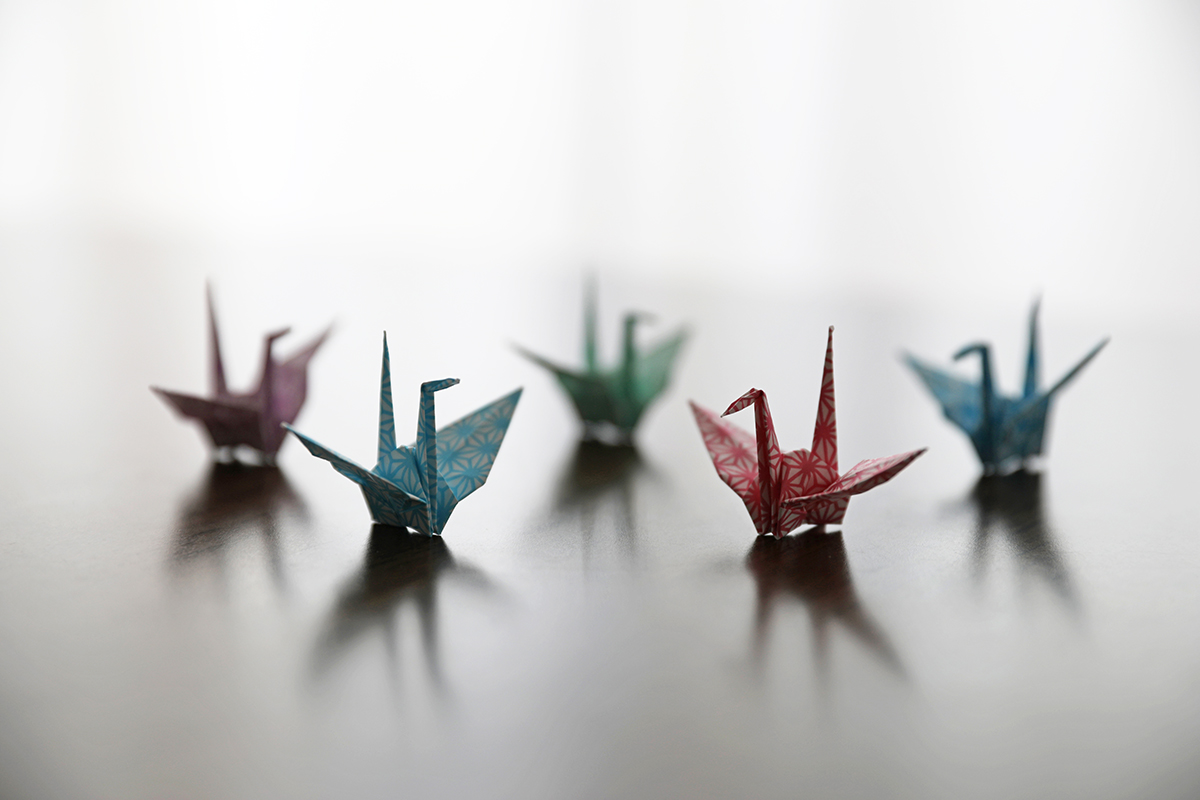The Legend of 1,000 Paper Cranes
- The legend of 1,000 paper cranes recently made its way to a restaurant in Omaha, where one of its servers is battling rare cancer.
- In Japan, the crane is considered a mythical animal that lives for 1,000 years; anyone with the patience and commitment to fold 1,000 paper cranes will be granted a wish.
- The staff at Plank Seafood Provisions attempted this feat for their co-worker, Corey Robison, who is battling fibrolamellar carcinoma, a rare form of liver cancer.
In Japan, the crane is considered a mythical animal that lives for 1,000 years; because of this, it became a symbol of good luck and long life. This transformed into the Japanese tradition that anyone who folds 1,000 paper cranes will be granted one wish.
Read MoreWhile the staff ultimately realized that 1,000 paper cranes was a huge undertaking, they ended up making 54 cranes and stringing them on a mobile for Robison to keep a symbol of hope and good health.
"It is hanging right next to my bed so that every morning, it's the first thing I see. I will have it forever," Robison tells the Omaha World-Herald. "I hope I am able to show them as much appreciation and love as they have shown me. They are a special breed of humans."
The Legend of 1,000 Paper Cranes
The legend of 1,000 paper cranes stems from Japan; anyone with the patience and commitment to fold 1,000 paper cranes will be granted their most desired wish, according to The 1000 Cranes Legend, because they have exhibited the loyalty of the crane and recreated its beauty.
However, there is more to the story.
In the 1950s, Sadako Sasaki was 2 years old when she was exposed to radiation from the atomic bomb that was dropped on Hiroshima. The exposure is thought to have caused her to develop leukemia as she got older.
Wishing to be cancer-free, Sasaki started to fold 1,000 paper cranes so her wish for good health would be granted. She folded the cranes in her hospital bed, but she ultimately died at 12 years old, before she was able to finish folding all 1,000 paper cranes.
Her dedication inspired her classmates, who finished folding all 1,000 paper cranes in Sasaki's honor. Sasaki was buried with all 1,000 paper cranes.
Corey's Cancer Battle
In August 2020, Robison was diagnosed with fibrolamellar carcinoma, or FLC, a rare form of liver cancer.
According to the National Cancer Institute, FLC is a rare cancer that usually grows in teens and adults under the age of 40. This type of cancer is different from other types of liver cancer because it happens in people who have healthy livers. (Other liver cancers tend to grow in people with livers that have been damaged by alcohol abuse or infection with certain viruses.)
Seeking Care for Rare Cancer at a Comprehensive Cancer Center
FLC is so rare that there is little data on how many people have it, according to NCI. Doctors and scientists assume that FLC makes up 1% to 5% of all liver cancers.
Shortly after Robison received his diagnosis, he had surgery, which is used to remove as much of the cancer as possible. While it is unknown what type of surgery Robison had, this surgery can involve either a resection, where part of the liver is taken out, or a transplant, where the whole liver is taken out and replaced with a donor liver, according to NCI.
However, just eight weeks after his surgery, Robison's cancer returned. Because of this, his medical team started him on a immunotherapy and chemotherapy regimen; he will remain on this drug regimen through December 2023.
"The combination of therapy I am on is novel," he tells the World-Herald. "I started it even before the clinical trial. It was conceived by M.D. Anderson (Cancer Center) in Houston and Rush (University Medical Center) in Chicago."
The regimen and the paper cranes seem to be working for him as Robison currently has no evidence of disease.
"Things are looking very good at this point," he says.
How to Find Help After a Rare Cancer Diagnosis
Tens of thousands of people, like Robison, are diagnosed with rare types of cancer every year. (For instance, fashion icon Virgil Abloh died last November of a rare cancer called cardiac angiosarcoma, a tumor that forms in the heart.)
Clinical Trials Can Be Life-Saving for Some
People facing an uncommon diagnosis may find it difficult to find a doctor who specializes in their illness. SurvivorNet experts have specific guidance on ways that rare cancer patients can find helpful resources and take the initiative to get the help they need.
Here are some ways to find help:
- Clinical trials: Many SurvivorNet experts say that once they have exhausted all other options for treating their patient's cancer, or if they have a rare cancer that could benefit from a trial, they will recommend looking into clinical trials. How can you find active clinical trials that may be right for you? Check out clinicaltrials.gov.
- Comprehensive care centers & academic centers: For many cancer warriors, community oncology can be a great treatment resource. However, people with rare cancer might require specialized evaluation. Most of the time, the most effective place to find a specialist is at academic centers and comprehensive care centers. Across the United States, there are only about 50 accredited comprehensive cancer centers. There are also various cancer cancers.
Learn more about SurvivorNet's rigorous medical review process.


